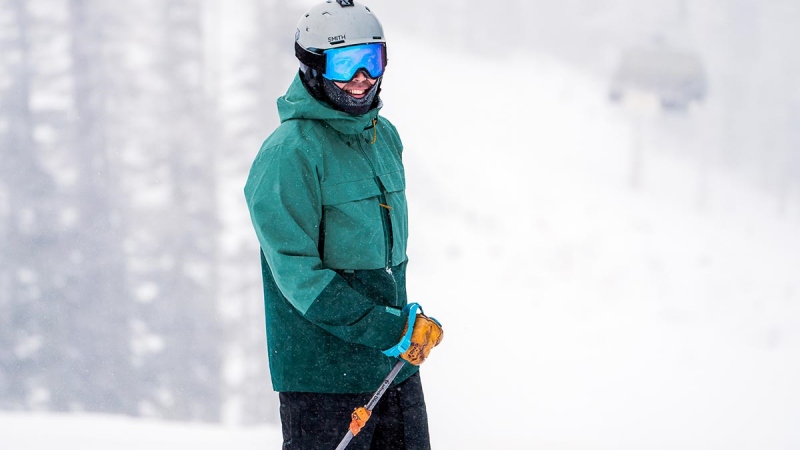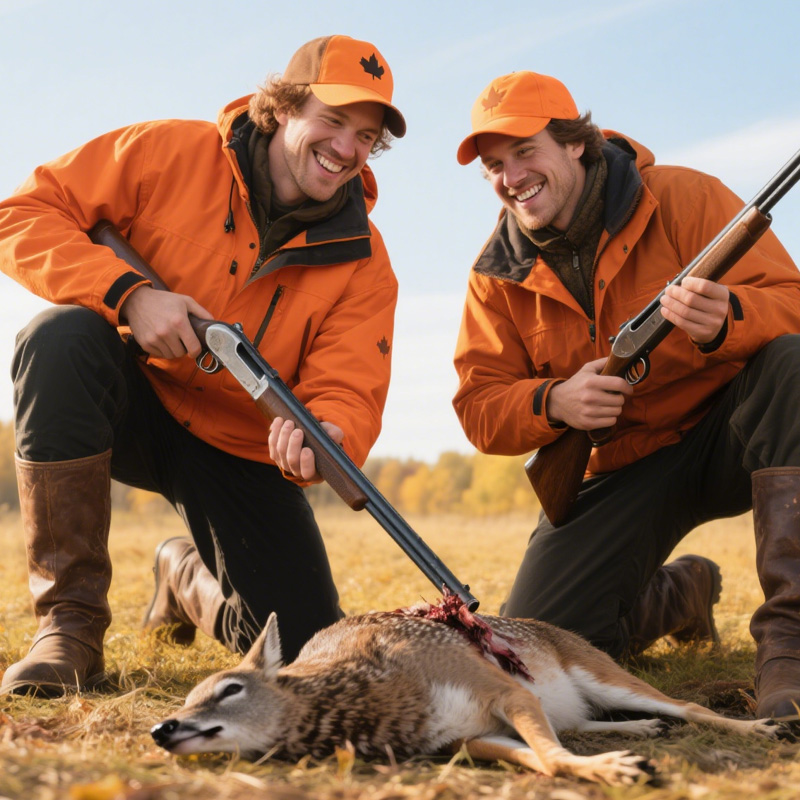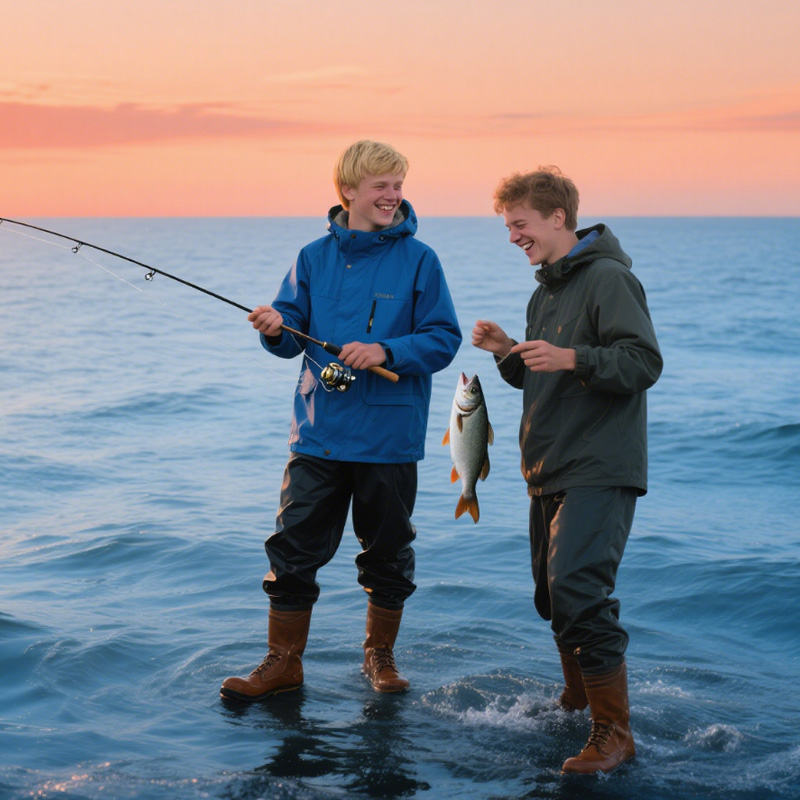Rain can turn a promising hunt into a soggy ordeal, making reliable outerwear essential for any serious hunter. The hunter rain jacket promises waterproof protection with a nod to style and rugged utility. While it’s a popular choice among hunters facing wet conditions, it’s not without its flaws. Understanding these drawbacks is crucial for making an informed gear decision that aligns with your hunting needs.
In this detailed guide, we’ll explore what defines a hunter rain jacket, its standout features, key advantages, and—most importantly—the disadvantages that could impact your performance in the field. Produced by skilled hunting clothing Factories like BOWINS Garment, these jackets cater to diverse hunting scenarios, but they’re not a one-size-fits-all solution. Whether you’re stalking game in drizzle or enduring a downpour, this article will equip you with the knowledge to weigh the pros and cons and select the right gear from trusted hunting clothing manufacturers.
1. What Is a Hunter Rain Jacket?
A hunter rain jacket is a specialized piece of outerwear designed to keep hunters dry and comfortable in wet weather, blending waterproof technology with features tailored for the hunt. These hunting jackets extend the legacy of their famous rubber boots into apparel. However, the term also applies broadly to rain jackets from hunting clothing manufacturers like Kings Camo or Sweet Protection, crafted specifically for hunting pursuits.
Typically made from materials like rubberized cotton, vinyl, or polyester with polyurethane coatings, a hunter rain jacket boasts waterproof ratings of 10,000-20,000 mm—ensuring robust protection against rain. For example, the Hunter Original Lightweight Rubberized Jacket uses a 100% polyester shell with a PU coating, while Kings Camo’s Hunter Climatex II Rain Jacket features stretch ripstop fabric for added durability. These designs often include sealed seams, adjustable hoods, and camo patterns like Mossy Oak, making them versatile for both urban and wilderness use.
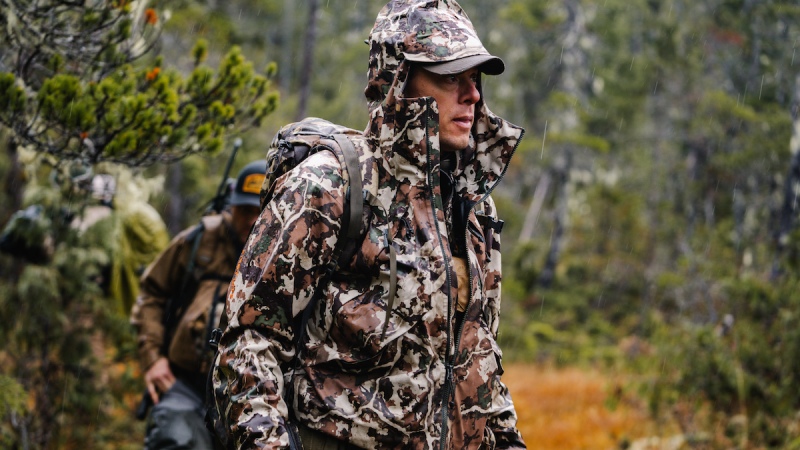
2. What Are Features of Hunter Rain Jacket?
The hunter rain jackets stands out due to its thoughtfully engineered features, reflecting the expertise of hunting clothing factories like BOWINS Garment. Here’s what you can expect:
2.1 Waterproof and Windproof Construction
Most hunter rain jackets employ advanced waterproofing—e.g., the Sweet Protection Hunter Rain Jacket uses 100% recycled polyester with a fluorine-free DWR (Durable Water Repellent) treatment, achieving a 20,000 mm rating. Windproof layers block gusts, enhancing comfort in stormy conditions.
2.2 Breathability for Active Use
Breathability varies, with ratings from 5,000 g/m²/24h (Hunter Original Vinyl Smock) to 24,000 g/m²/24h (Canis Athlete’s Nunavut Rain Jacket). Stretch fabrics and ventilation zips, like those in Kings Camo’s designs, help manage heat during movement.
2.3 Practical Storage and Adjustability
Multiple pockets—such as the seven in the Nunavut Rain Jacket—offer space for gear, while adjustable hoods, cuffs, and hems (e.g., Hunter Climatex II) ensure a snug fit, keeping water out.
2.4 Quiet Fabrics for Stealth
Hunting-specific models from hunting clothing manufacturers prioritize silence—Kings Camo uses brushed polyester to reduce noise, critical for stalking game.
3. Key Advantages of Hunter Rain Jacket
The hunter rain jackets offers compelling benefits, making it a worthy contender for hunters.
3.1 Reliable Wet-Weather Protection
With waterproof ratings often exceeding 10,000 mm, the hunter rain jacket excels in rain. The Hunter Original Waterproof Jacket, for instance, uses sealed seams to keep you dry in moderate to heavy downpours, a boon for duck or deer hunters in wet climates.
3.2 Stylish and Versatile Design
Its sleek, glossy finishes—like Hunter green or black—blend rugged utility with urban appeal, as noted in *Travel + Leisure* (2025). This versatility suits hunters who transition from field to town.
3.3 Durable Build Quality
Crafted by hunter rain jackets, these jackets use tough materials like 300D polyester or ripstop fabrics (e.g., Kings Camo Hunter Climatex II), resisting wear from brush or light abrasion, ensuring longevity in moderate conditions.
3.4 Lightweight Options for Mobility
Models like the Sweet Protection Hunter Rain Jacket (under 1 lb) pack into their own hoods, offering portability without sacrificing protection—ideal for mobile hunters.
4. Key Disadvantages of Hunter Rain Jacket
Despite its strengths, the hunter rain jackets has notable drawbacks that hunters should consider before investing.
4.1 Limited Breathability in Warm Conditions
A key disadvantage of the hunter rain jacket is its modest breathability. The Hunter Original Vinyl Smock, with a 5,000 g/m²/24h rating, traps heat and moisture during exertion or temperatures above 60°F, per Outdoor Gear Lab (2025). Compared to high-tech options like the Sitka Stormfront (30,000 g/m²/24h), it can leave you sweaty on active hunts, reducing comfort.
4.2 Heavy and Bulky for Long Treks
Weight is a concern—Hunter’s Lightweight Rubberized Jacket clocks in at 1.5-2 lbs due to its rubberized 300D polyester shell. This bulk, highlighted in Nordstrom reviews, hinders packability and fatigues hunters on long hauls, unlike lighter alternatives (e.g., Columbia Watertight II, under 1 lb).
4.3 Premium Price for Basic Features
Cost is a drawback, with hunter rain jackets ranging from $150-$250. While stylish, they often lack advanced membranes like Gore-Tex, common in similarly priced jackets from hunting clothing manufacturers like Kuiu ($429 for the Stormfront). This price-to-feature gap, noted in *Business Insider* (2024), may not justify the investment for budget-conscious hunters.
4.4 Durability Issues Over Time
Though initially robust, the hunter rain jacket can falter with prolonged use. Rubberized coatings may crack or peel after 1-2 years, per *Manchester Evening News* (2023), and seams may weaken under stress—less durable than reinforced designs from brands like Forloh.
4.5 Lack of Insulation for Cold Weather
Designed for rain, not cold, the hunter rain jacket offers no thermal lining. In sub-40°F conditions, it requires heavy layering—unlike insulated options like the L.L.Bean Baxter State Parka—limiting its standalone use in winter hunts.
4.6 Noise Potential in Stealth Scenarios
While some hunting-specific models (e.g., Kings Camo) use quiet fabrics, glossy finishes on Hunter’s Original line can rustle, per *Field & Stream* (2024). This noise risks alerting game, a critical flaw for bowhunters needing silence.
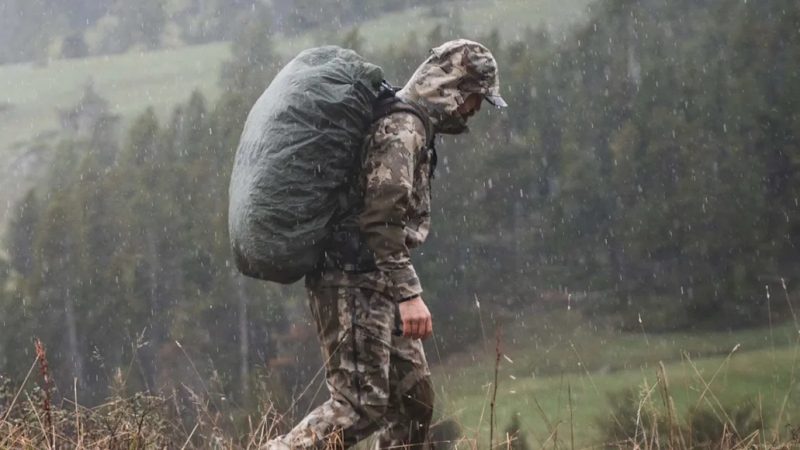
5. Considerations When Selecting Hunter Rain Jacket
Choosing the right hunter rain jacket involves weighing your hunting style and environment against its features and flaws. Here’s what to consider:
5.1 Weather and Terrain Needs
For wet, mild climates, the hunter rain jacket shines with its waterproofing (e.g., 20,000 mm in Sweet Protection models). In hot, humid, or cold zones, its breathability and insulation limits may push you toward alternatives from hunting clothing manufacturers like Sitka or First Lite.
5.2 Activity Level and Mobility
Active hunters need lightweight, breathable options. The 1.5-2 lb weight of a hunter rain jacket suits static blinds but burdens trekkers—consider packable designs from hunter rain jackets for mobility.
5.3 Budget vs. Performance
At $150-$250, ensure the hunter rain jacket’s features match your needs. If stealth or durability tops your list, higher-end options (e.g., Forloh AllClima, $429) might offer better value despite the cost.
5.4 Customization and Fit
hunting clothing manufacturers often provide camo or sizing options. Hunter’s relaxed fit may require sizing tweaks—check fit guides or opt for custom cuts from a Hunting Clothing Factory like BOWINS Garment.
6. Final Thoughts
The hunter rain jacket is a compelling blend of waterproof reliability and timeless style, crafted with care by hunter rain jackets to tackle wet hunts. Its advantages—robust rain protection, durability in moderate conditions, and versatile design—make it a solid pick for hunters facing drizzle or steady showers. Yet, its disadvantages—limited breathability, weight, cost, and lack of insulation—reveal it’s not a universal solution.
For hunters in mild, wet climates with low exertion, the hunter rain jacket delivers. But for those in humid, cold, or high-mobility scenarios, alternatives from hunting clothing manufacturers might outshine it. Assess your environment, budget, and hunting demands to decide if this jacket—or a more specialized option—best equips you for success. Quality gear isn’t just about weathering the storm; it’s about thriving in it.
Have you tested a hunter rain jacket in the field? Share your experience below! Explore more hunting gear insights on our blog or browse top picks from leading hunting clothing manufacturers like BOWINS Garment to gear up for your next adventure.

